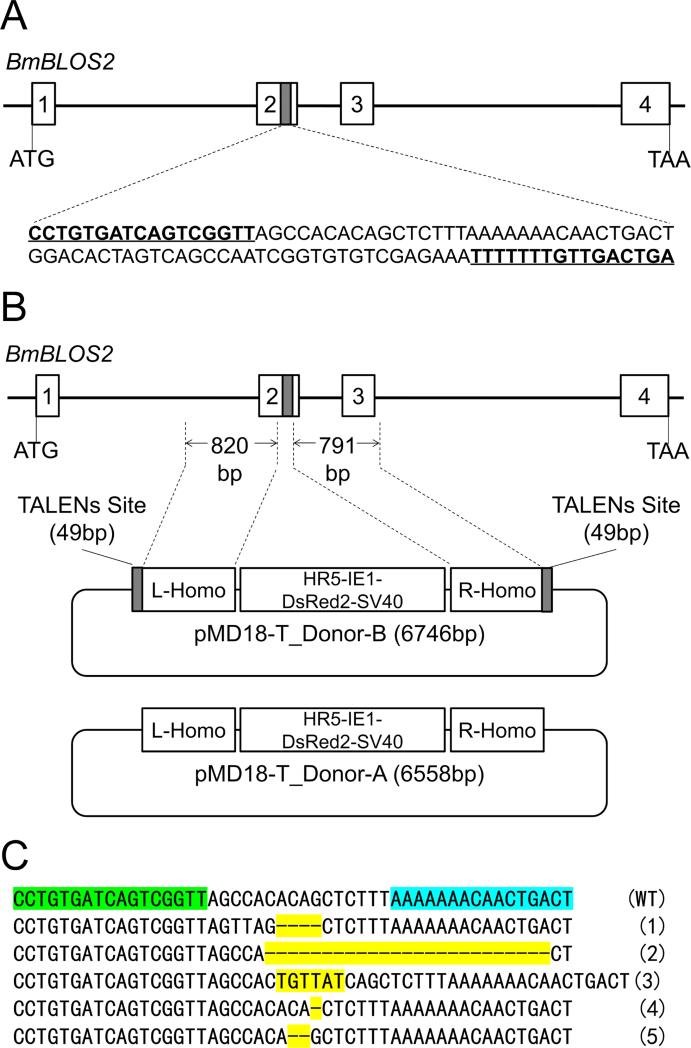Fig.1.
Schematic representation of TALENs targeting site and donor B. (A) Schematic representation of the TALENs targeting site. The thin black line represents the BmBLOS2 genome locus with the open boxes signifying the four exons. A 49bp fragment (gray box) located in exon-2 is the targeting site. The sequences in bold and underlined are the TALENs targeting sequence. A 16bp sequence serves as a spacer between the two sites. (B) Schematic representation of the donor B. A cassette expressing a DsRed2 marker (with a HR5 enhancer sequence, driven by a baculovirus IE1 promoter) was cloned into the pMD18T- simple vector. Two homologous DNA fragments (L-homo and R-homo), 820bp and 791bp at the 5’- and 3’-ends, respectively, of the TALEN site were cloned separately into the left and right sides of the DsRed2 cassette. The DsRed2 marker with two homologous fragments was flanked by two of the 49bp TALENs sites (donor B). (C) Mutations detected in G0 mutants with oily skin phenotype (OSP). Genomic DNA was extracted from G0 mutants with severe OSP. Fragments covering the target site were amplified and sequenced. Small deletions or insertions resulting from non-homologous end joining repair were detected. Sequences highlight in green and blue are TALENs target sequence. Mutations are highlight in yellow.

